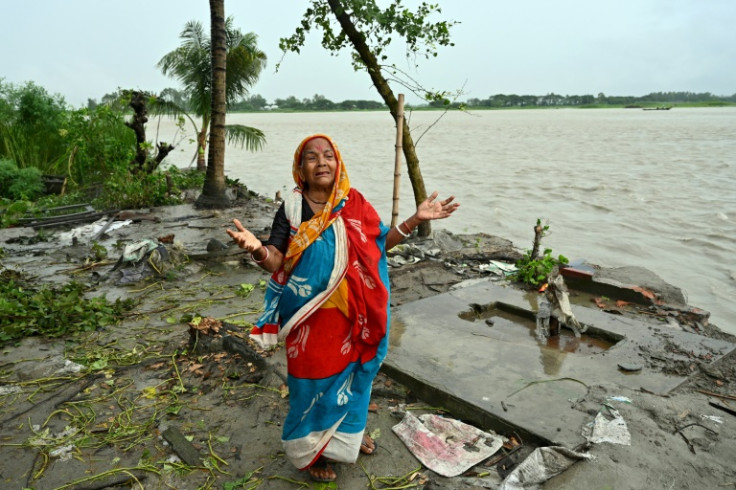Almost Half Of Drinking Water In Bangladesh Contains Cancer Causing Arsenic
The high concentration of arsenic levels has been attributed to seasonal flooding and rising sea levels.

Almost 50 per cent of Bangladesh's groundwater contains arsenic in concentrations that are dangerously harmful for human use, according to a new study published in the journal PLOS ONE.
The scientists involved in the study analysed water samples from wells across Bangladesh and found that all of them breached the safe limit set by the World Health Organisation for drinking water.
The high concentration of arsenic has been attributed to seasonal flooding and rising sea levels. Arsenic is released from sediments when saltwater comes into contact with fresh water.
The arsenic concentration in some of the samples was as high as 450 micrograms per litre, 45 times higher than the WHO-approved levels. The acceptable level of arsenic content, according to WHO limits, is less than 10 micrograms per litre.
Scientists have warned that this might be happening in West Bengal as well, an Indian state that shares a border with Bangladesh.
"The same chemical processes from rising sea levels that release arsenic from sediments into Bangladesh's drinking well water will also very likely release arsenic from sediments into West Bengal's drinking well water," The Independent quoted Dr Seth Frisbie, one of the authors of the study, as saying.
"It wasn't a problem when people drank surface water, because the surface water is in communication with the oxygen in the atmosphere and that makes the arsenic insoluble and removes it from the water.
"But the deep well water does not communicate as well with the oxygen in the atmosphere. And that's why all of a sudden giving people access to these deep water wells has been a tremendous public health crisis," added Dr Frisbie.
Millions of people worldwide are exposed to arsenic-contaminated water, which, if consumed over a long period of time, can cause chronic diseases and various types of cancers.
Ingestion of large doses can also cause gastrointestinal symptoms, disturbances of cardiovascular and nervous system functions, and eventually death. It can also cause changes in the skin, such as hyperkeratosis and pigmentation changes.
In the past, elevated levels of arsenic have been reported in countries like Chile, Mexico, China, Argentina, the USA, and Hungary. It is introduced into groundwater from several natural and anthropogenic sources. Sea-level rise (SLR)-induced flooding can also release the contaminant into groundwater.
The big picture:
Bangladesh is one of the most vulnerable countries to climate change. It is highly prone to flooding. Erratic and intense rainfall has only increased its risk of flooding. It is increasingly being hit by more powerful cyclones, which eventually lead to seasonal flooding. These factors are only expected to make drinking water all the more unhealthy and scarce in future.
In 2023, a report published by the World Resources Institute (WRI) claimed that as many as 25 countries are facing an unparalleled water emergency and that immediate action is needed to address the looming crisis.
It added that a quarter of the world's population currently faces "extremely high water stress" each year and that a billion more are expected to be affected by 2050.
The report also highlighted how increased demand for water and climate change can exacerbate the water crisis for people across countries. It said that increased water stress could also lead to competition for water resources around the world.
Climate change has already started to affect people and their sources of livelihood. Forest fires, droughts, flash floods, and heat waves have become more frequent.
Drought, floods, wildfires, extreme temperatures, and marine heat waves are all being reported simultaneously in different parts of the world. Two million people have already been killed by extreme weather, climate, and water-related events since 1970.
South Asian countries like Pakistan, India, and Bangladesh are some of the most vulnerable to extreme weather caused by global warming and climate change. If the rising temperatures are not brought under control, extreme weather events will only become more frequent and catastrophic.
A report by the UN World Water Development Report claims that 2 billion people do not have access to safe drinking water, and 3.6 billion lack access to safely managed sanitation. Around 10% of the global population already lives in countries with high or critical water stress.
The experts have called for urgent measures to address the crisis. They have suggested that communities, governments, stakeholders, and businesses need to join hands to ensure that we can avoid a catastrophic situation.
© Copyright IBTimes 2025. All rights reserved.






















